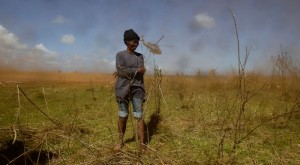
Certain industries in the agriculture sector, including the sugar industry, remain unprepared and are threatened by the upcoming establishment of the Asean Economic Community, which will see the reduction of tariffs across goods, according to Trade Secretary Gregory L. Domingo. INQUIRER NORTHERN LUZON FILE PHOTO
MANILA, Philippines—Certain industries in the agriculture sector remain unprepared and are threatened by the upcoming establishment of the Asean Economic Community (AEC), which will see the reduction of tariffs across goods.
Trade Secretary Gregory L. Domingo admitted that more investments in the sugar industry, for instance, will have to be made. These are expected to help ensure the competitiveness of the industry once the Philippines opens up to freer trade with the nine other member-states of the Association of Southeast Asian Nations (Asean) in two years’ time.
“In general, we are ready. [Regarding the] trade in goods, we are mostly ready, except for sugar, as the investments to modernize the milling equipment have not been made,” Domingo told the Inquirer.
Jose Maria Zabaleta, former chair of the Philippine Sugar Millers Association, meanwhile stressed the need to repeal certain laws deemed a hindrance to the sugar industry’s competitiveness.
“Small farms cannot compete with bigger and better-financed firms in Thailand. [The government] needs to allow reconsolidation, and to remove the Comprehensive Agrarian Reform Program (CARP) Law for sugar, rice and most other crops,” Zabaleta said in a separate text message.
Passed in 1987, CARP mandated the distribution of plantations in excess of 25 hectares to workers and beneficiaries. With some sugar plantations now averaging five hectares in size, these reportedly faced difficulties in terms of economies of scale.
The AEC may also make it more difficult for sugar farmers as they will no longer be protected by tariffs slapped on imported sugar. At present, tariffs on imported sugar stand at 18 percent and will go down to only 5 percent by 2015.
The AEC scheme represents a single market and distribution base, a highly competitive economic region with equitable economic development, and a region fully integrated into the global economy.
Simply put, the integration allows Asean companies in 10 Asean member-nations, including the Philippines, to enter each other’s markets, encouraged by zero tariffs and reduced bureaucratic clearance requirements.
For local industries, the AEC will mean stiffer competition from the “tsunami” of foreign goods, services and manpower entering the Philippine market.—Amy R. Remo


